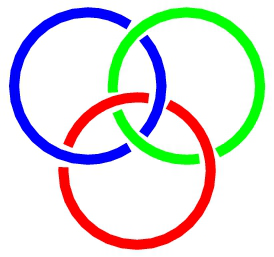Orateur
Prof.
Tobias Frederico
(ITA, São José dos Campos, Brazil)
Description
A bi-dimensional map in the parameter space can be defined in the Efimov limit by the critical conditions for an excited state in three-body systems with two-identical particles.
The scattering lengths of the two-body subsystems and one three-body scale define the
parametric space. The border of the map encloses a region where excited states do exist (see ref. [1]). In this parameter space crossing the critical boundary, when at least one subsystem is bound, implies that an excited state becomes a virtual one [2] and a continuum resonance in the Borromean case. We show that these qualitative features are independent of mass ratios.
The Borromean case of a three-boson continuum resonance was recently
evidenced [3] in an experiment with trapped ultracold cesium
gas near a Feshbach resonance. It is hoped that mixtures of different mass atoms in traps with tunable interactions allows to check the transition from Borromean to
non-Borromean situations where a continuum resonance becomes bound
and turns to a virtual state by changing the sign of the scattering
length. In the nuclear context, one example is ^{20}C modeled as n-n-^{18}C} system with a s-wave short-range interaction between the pairs. Using a zero-range interaction
we show that this system presents a virtual state that turns into an excited state when the
^{19}C binding is decreased [2]. Close to this condition, we also discuss
the low-energy neutron-^{19}C$ elastic scattering. The s-wave phase-shift presents
a zero corresponding to a pole of k cot delta in the complex plane. The pole is
sensitive to the position of the excited bound or virtual state. We also discuss these results in the context of ultracold atomic systems of different species with tunable interactions.
References:
[1] T. Frederico and M. T. Yamashita, Nucl. Phys. {\bf A} 790, 116c (2007).
[2] M. T. Yamashita, T. Frederico and L. Tomio, Phys. Rev. Lett. {\bf 99},
269201 (2007); Phys. Lett. B {\bf 660}, 339 (2008).
[3] T. Kraemer et al., Nature {\bf 440}, 315 (2006).
Auteur principal
Prof.
Tobias Frederico
(ITA, São José dos Campos, Brazil)
Co-auteurs
Dr
Lauro Tomio
(IFT/UNESP, São Paulo, Brazil)
Dr
Marcello T. Yamashita
(ITAPEVA/UNESP, Itapeva, Brazil)

